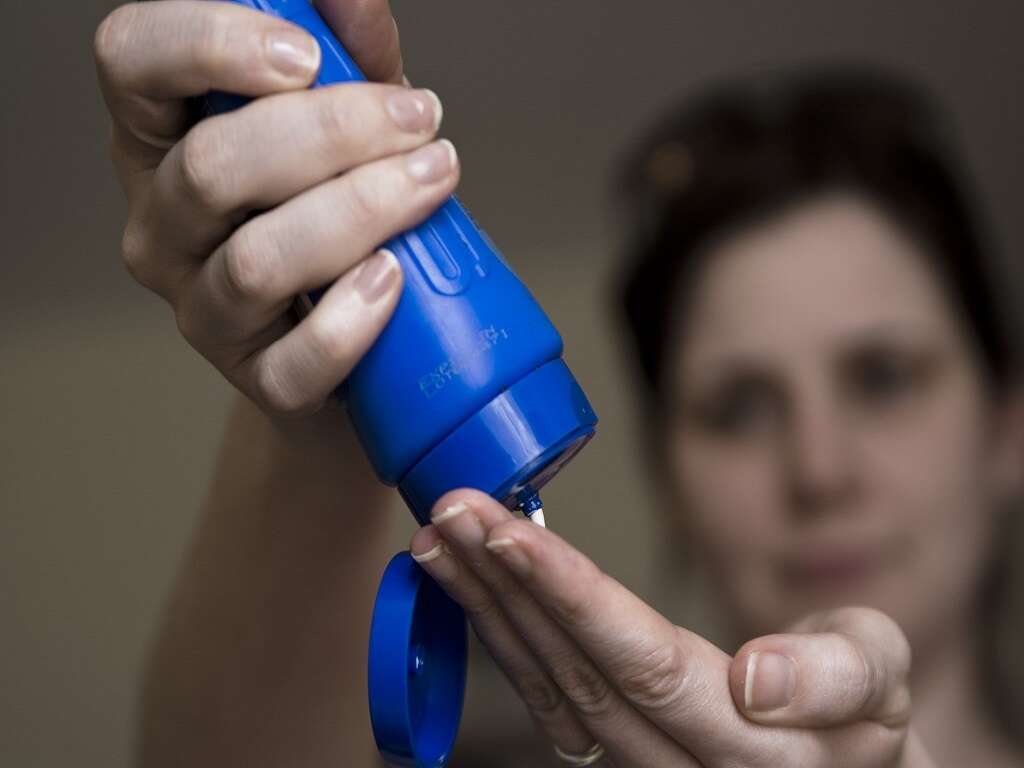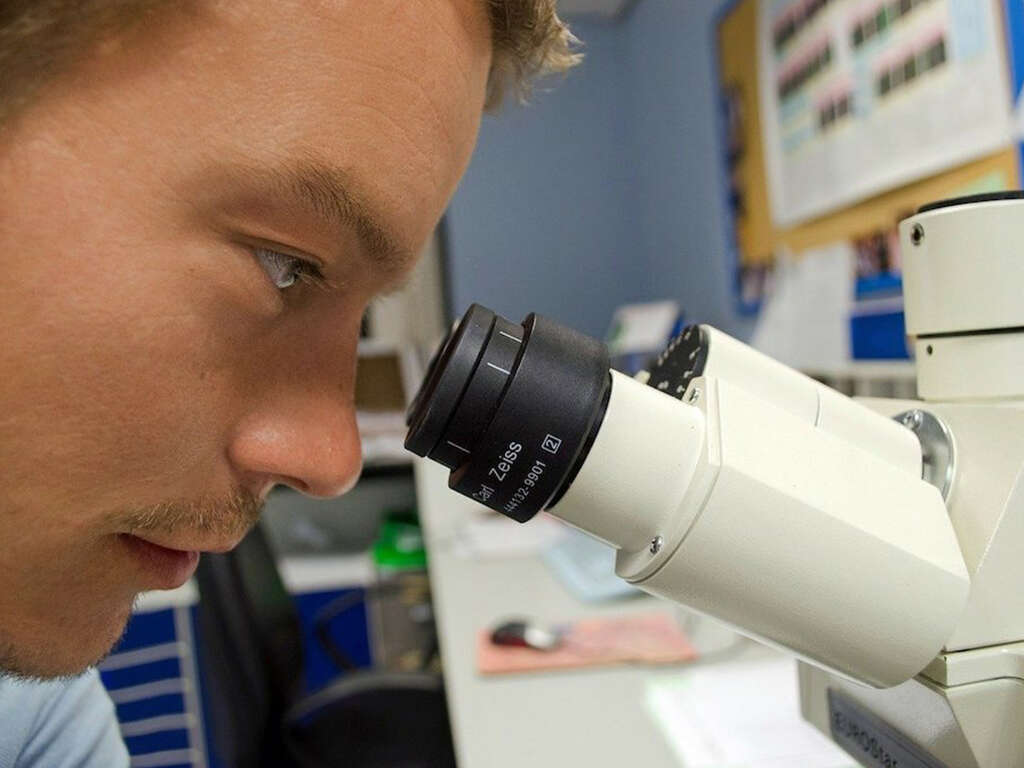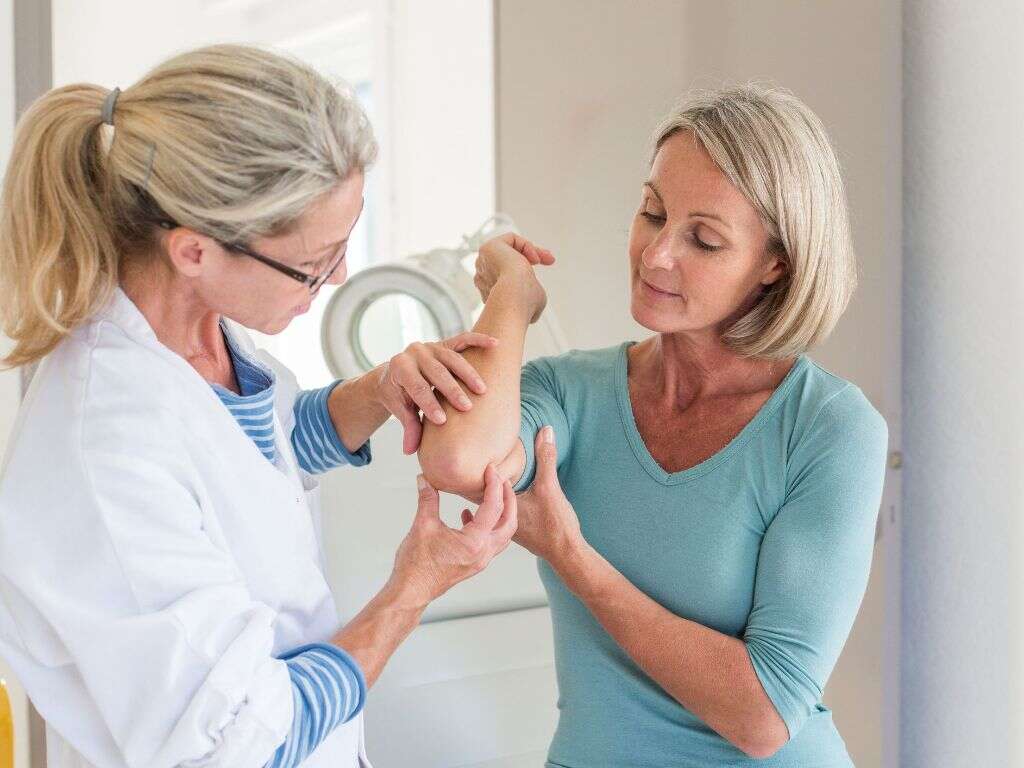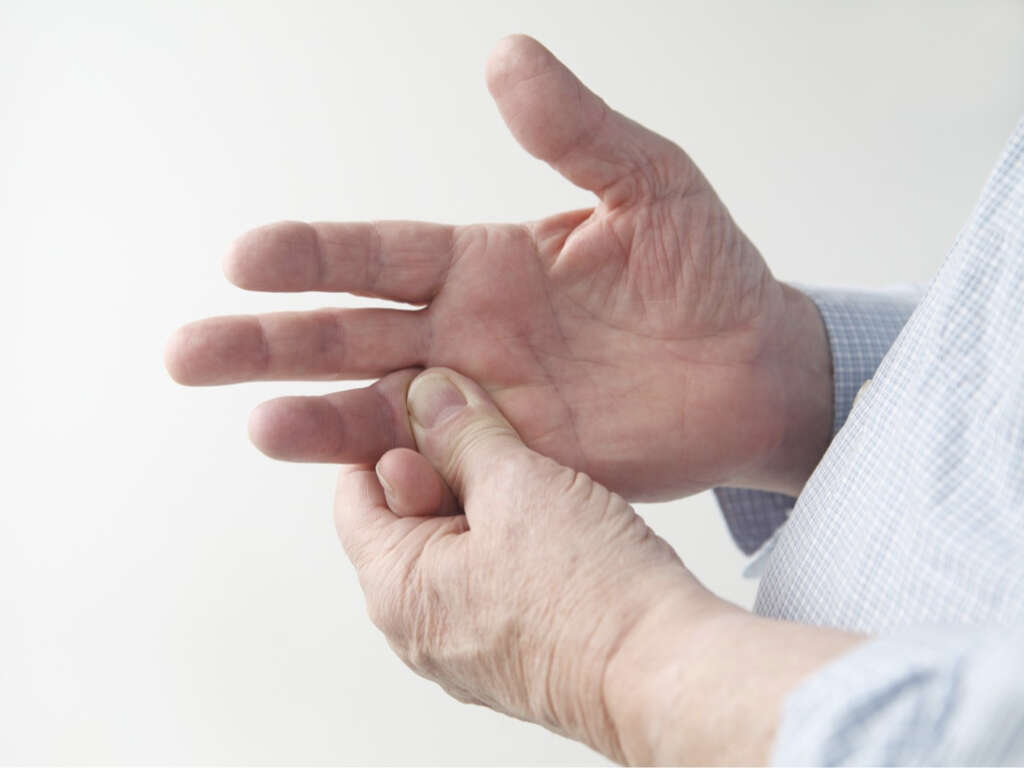10 Scleroderma Symptoms
Scleroderma or systemic sclerosis is a complex autoimmune disease that results from excessive deposition of collagen and other molecules of connective tissue in the skin and multiple organs. Moreover, other pathologic disease processes include immunologic abnormalities, and alterations in the microvasculature (fibroproliferative). These processes lead to a wide range of clinical manifestations that produce several clinical forms. These range from limited skin involvement to severe organ involvement and diffuse skin sclerosis. However, there can also be rare cases of scleroderma with internal organ involvement in the absence of cutaneous involvement.
Scleroderma has no known specific cause. It is, however, thought to be an autoimmune condition where genetic predisposition plays an important role. Importantly, the risk of scleroderma is higher in women than men (4 to 9 times higher). Because of its complexity, scleroderma symptoms vary from one person to another. It is therefore important that thorough investigation is conducted for proper diagnosis and treatment. Following are some of the more common symptoms of scleroderma:
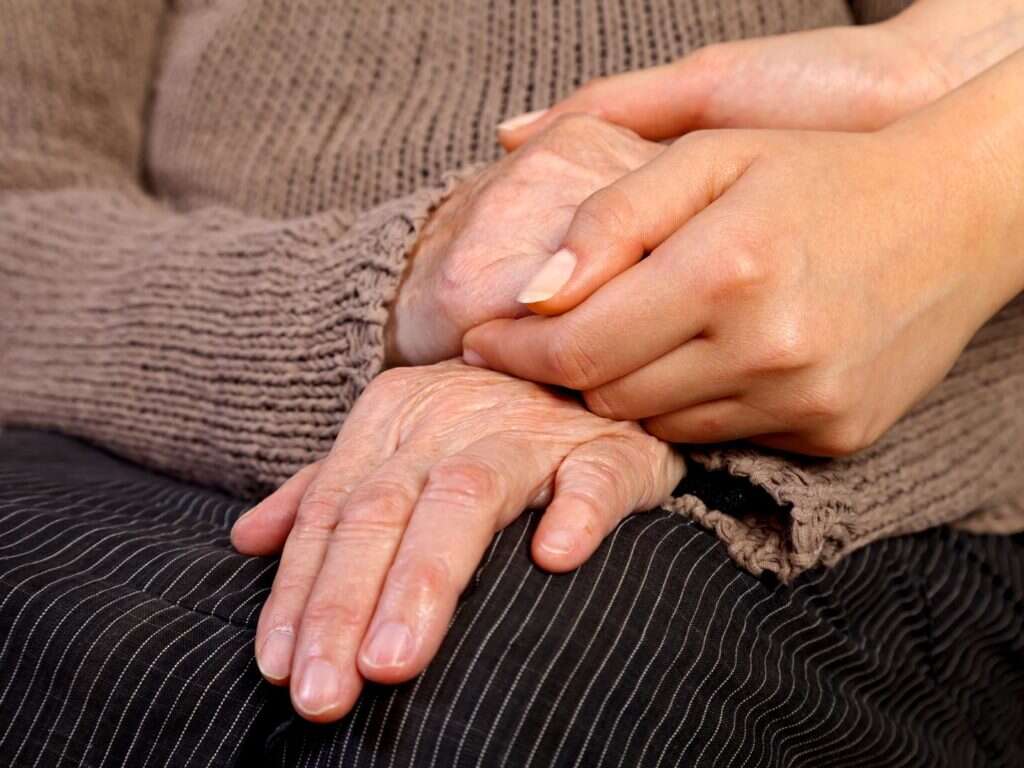
Symptom #1: Hardening Of The Skin
One of the major symptoms of scleroderma is the thickening and tightening of the skin in the affected areas as a result of deposits of different types of collagen and other molecules. This is often preceded by puffiness or swelling of those areas. These manifestations initially affect the fingers and progress symmetrically towards the trunk. The affected areas can also present with loss of skin creases and hair, decreased sweating, and inability to make a skin fold.
The affected parts become hardened and fixed in a bent position, called flexion contracture. This slows down and constricts movements in the affected joints. The skin also appears to have irregularly shaped patches in areas where it is more tight and thick.
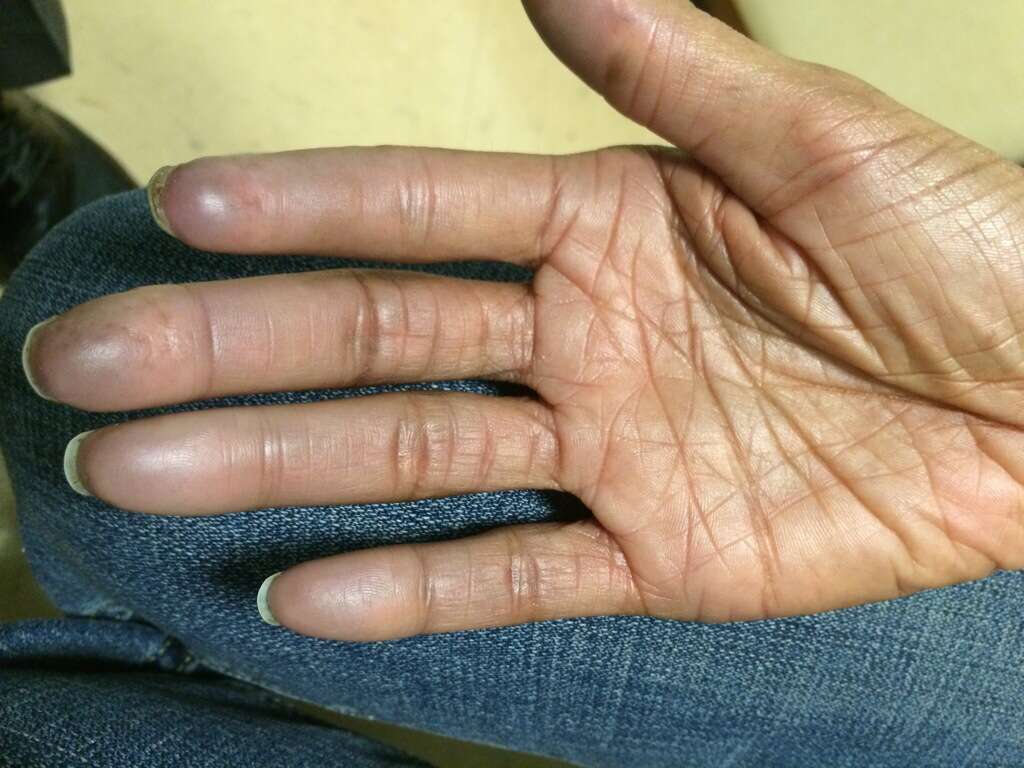
Symptom #2: Finger Ulcers
When scleroderma affects the hands, it can cause painful ulcerations or open sores on the fingertips. Ulceration occurs due to poor blood flow to the fingertips, which in turn is related to the narrowing of blood vessels caused by the disease. While the ulceration does not result from infection, if untreated, it can become infected.
Digital ulcers are a common symptom that affects about 40 percent of systemic scleroderma patients and can last for several weeks or even months. The symptom is managed by medication to improve blood flow and keeping the affected areas clean and covered to prevent infection or injury.
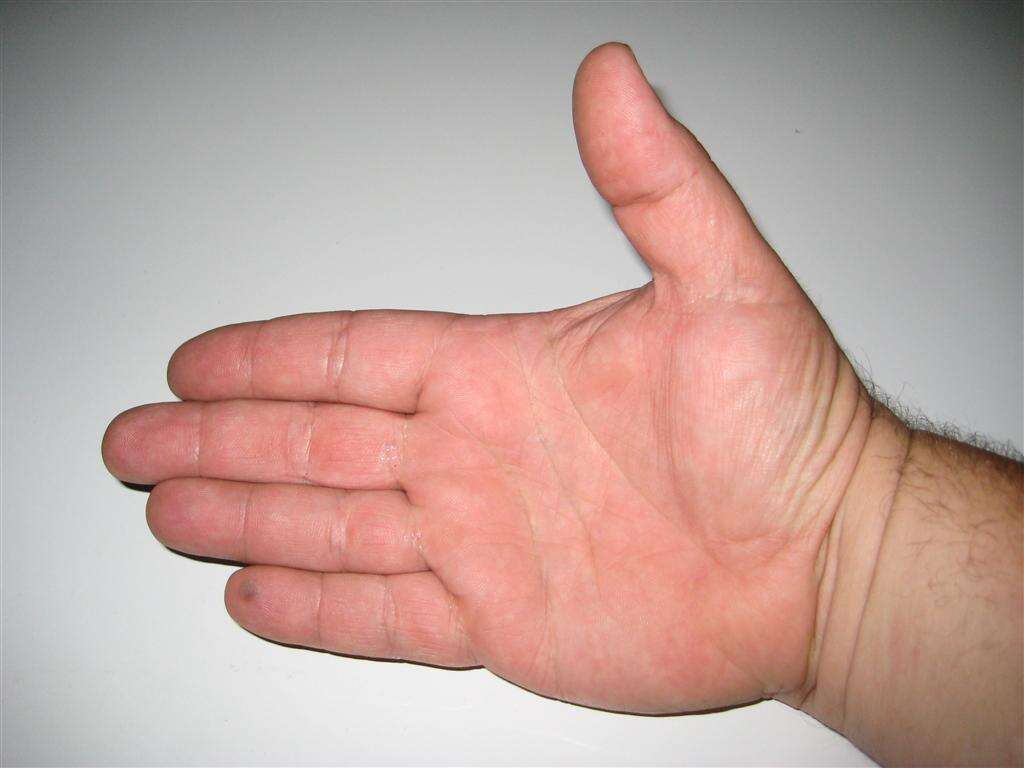
Symptom #3: Calcinosis
Besides the other symptoms affecting the skin, and in many cases the hands and fingers, scleroderma can cause calcinosis or calcium deposits in the skin and subcutaneous tissues. Calcinosis usually occurs on the skin of the fingertips or extremities (i.e. around the joints). Occasionally, large calcium deposits can also occur. The lumps vary in size and number and are not a result of excess calcium in the bloodstream.
Calcinosis affects at least one-quarter of patients with scleroderma. Diagnosis can usually be made clinically, or with plain radiography.
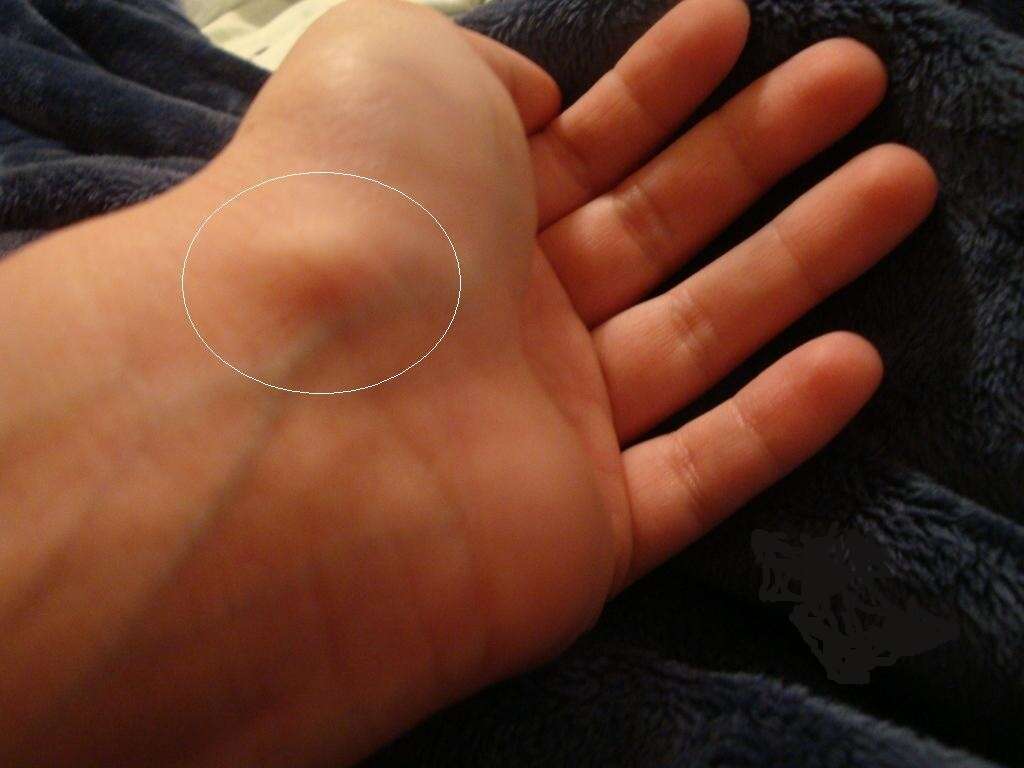
Symptom #4: Joint Pain & Stiffness
Scleroderma can present with generalized joint pain and morning stiffness. Loss of function (i.e. range of motion) of affected joints can ensue over time, mostly due to skin tightening (i.e. flexion contractures). Patients may also experience muscle weakness and muscle wasting due to muscle tissue inflammation (myositis).
While non-steroidal anti-inflammatory drugs can be used to relieve pain, ultrasound and radiographic examinations may be required to carry out diagnosis before treatment.
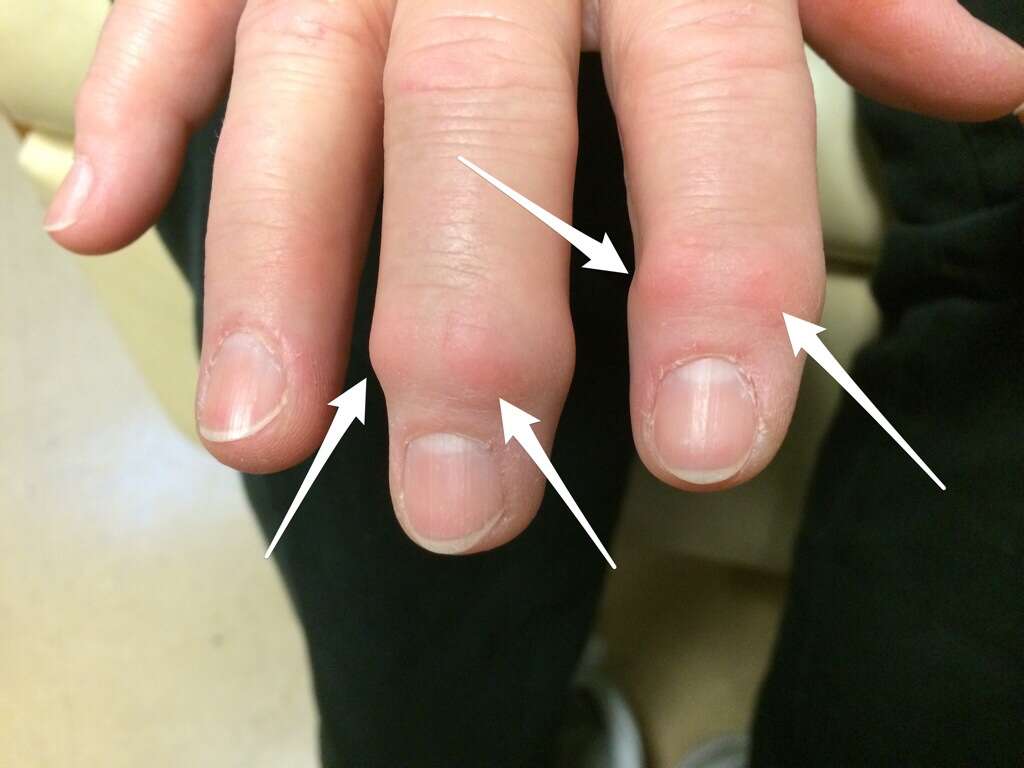
Symptom #5: Skin Color Changes
Many patients with systemic sclerosis exhibit signs and symptoms of Raynaud phenomenon. It is a condition in which spasms of small arteries, typically in the fingers of the hands, cause episodes of reduced blood flow to the area. Coupled with the narrowing of blood vessels also caused by the disease, it results in color changes in the skin. These include pallor as blood flow reduces (white or pale), cyanosis or bluish discoloration when most of the flow is cut off, and finally erythema or red skin when the blood returns to the area. These episodes may also be accompanied by pain, tingling, or numbness.
These skin changes are short-lived and clear within a few minutes. Triggers for these events include emotional stress, cold exposure, and smoking. Most importantly, Raynaud Phenomenon is one of the earliest scleroderma symptoms in about 90 percent of patients.
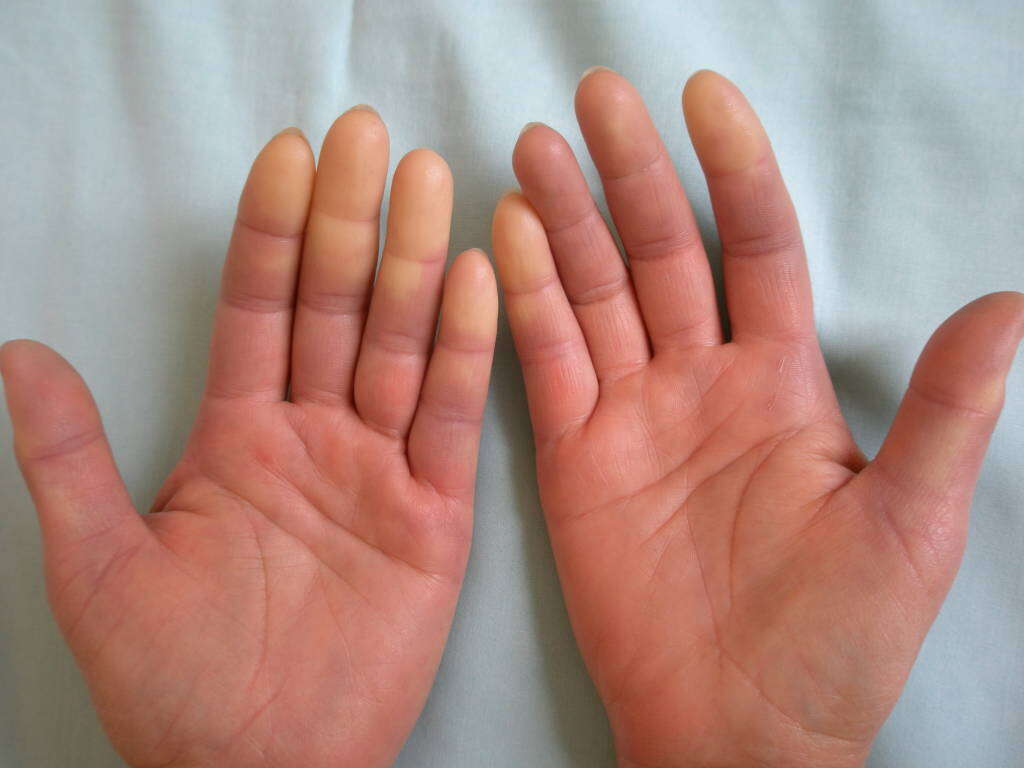
Symptom #6: High Blood Pressure
Scleroderma can cause systemic arterial hypertension by affecting the kidneys. From the onset of the disease, patients with scleroderma may develop silent blood vessel changes in the kidneys (similar to those of fingers and lungs). In a minority of patients, some unknown event triggers blood vessel spasms in the kidneys that produce additional damage. This, in turn, triggers an aggressive elevation of blood pressure. This manifestation is known as scleroderma renal crisis (SRC). SRC is characterized by a rapid onset of significant high blood pressure, which worsens rapidly and may lead to more kidney damage.
The best approach for patients with scleroderma that are at high risk for SRC (i.e. early diffuse scleroderma), is to recognize it early by frequent monitoring of blood pressure. Once high blood pressure is recognized, it should be treated promptly to prevent kidney injury.
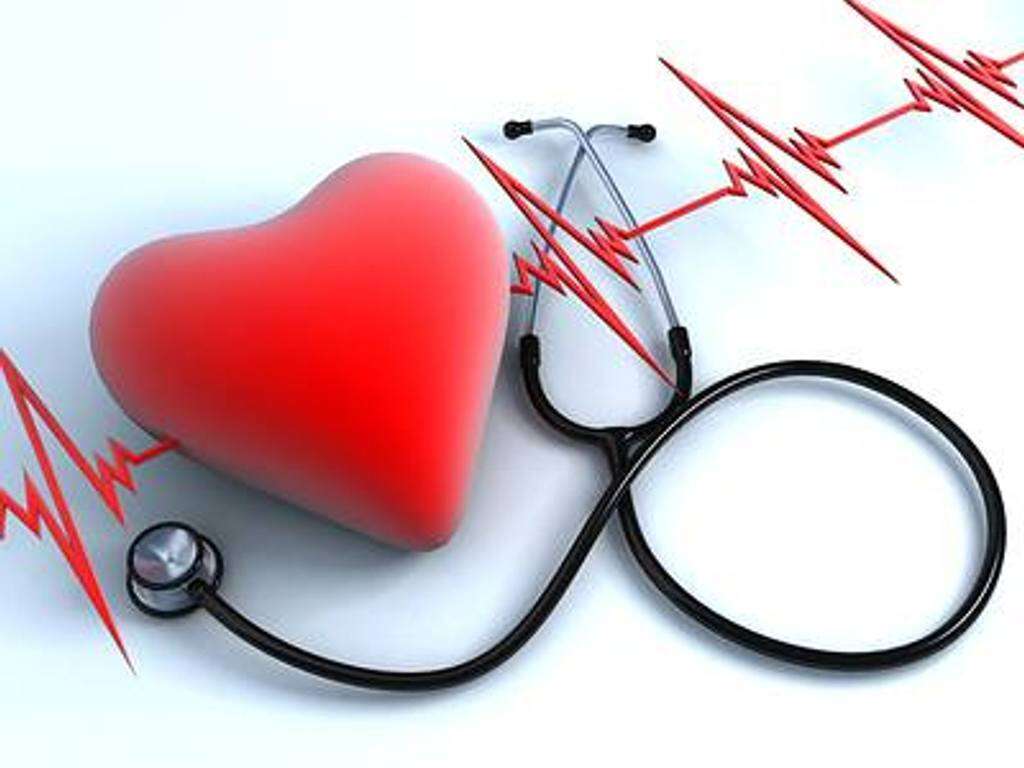
Symptom #7: Irregular heart beats
Scleroderma frequently affects the heart. It can affect many structures of the heart, including the pericardium, myocardium, the conduction system, and cardiac valves. Patients with systemic sclerosis frequently report signs and symptoms of arrhythmias or conduction defects.
These rhythm disorders can have many origins, including pericardial disease, valve regurgitation, pulmonary hypertension, or primary heart involvement. Sadly, the presence of cardiac involvement usually indicates a poor outcome for the patient.

Symptom #8: Digestive Problems
In patients with systemic sclerosis, atrophic and fibrotic changes in the smooth muscle and submucosa of the gastrointestinal tract can lead to decreased peristalsis (the wave-like movements that push its contents forward). Also, the muscular valve at the base of the swallowing tube (lower esophageal sphincter) can become weakened. In turn, this can cause gastroesophageal reflux disease (GERD), constipation, gastroparesis (delayed gastric emptying), and pseudo-obstructions.
Patients with GERD can experience symptoms like heartburn, nausea and abdominal pain. Patients with constipation and gastroparesis can present with abdominal distention. Additionally, patients with gastroparesis can experience nausea and a sensation of early satiation or loss of appetite. Finally, some patients may experience diarrhea, as a result of the overgrowth of gut bacteria, and malabsorption.

Symptom #9: Genital & Urinary Problems
The same way this condition occurs in other parts of the body, scleroderma symptoms may affect the genital and urinary tracts. Patients with scleroderma can exhibit bladder fibrosis (infiltration of the bladder with fibrotic tissue), which may present with micro-hematuria or the microscopic presence of blood in the urine.
In men, scleroderma can lead to erectile dysfunction and difficulties during urination; while in women, scleroderma can cause vaginal mucosal inflammation and dryness. These can lead to vaginal narrowing, possibly making intercourse painful for the patient.

Symptom #10: Tightening Of The Mouth
The same way it causes tightening of skin in other areas of the body; scleroderma can cause the skin around the mouth to tighten. The tightening can also affect other tissues in the mouth. These factors can lead to a reduction in the size of the mouth, making harder to eat or brush your teeth properly. Besides, scleroderma can lead to low production of saliva such that even the natural, passive cleaning of the mouth by the flow of saliva is hindered.
These scleroderma symptoms can lead to poor oral health, including tooth decay, other oral infections, and halitosis or bad breath.





